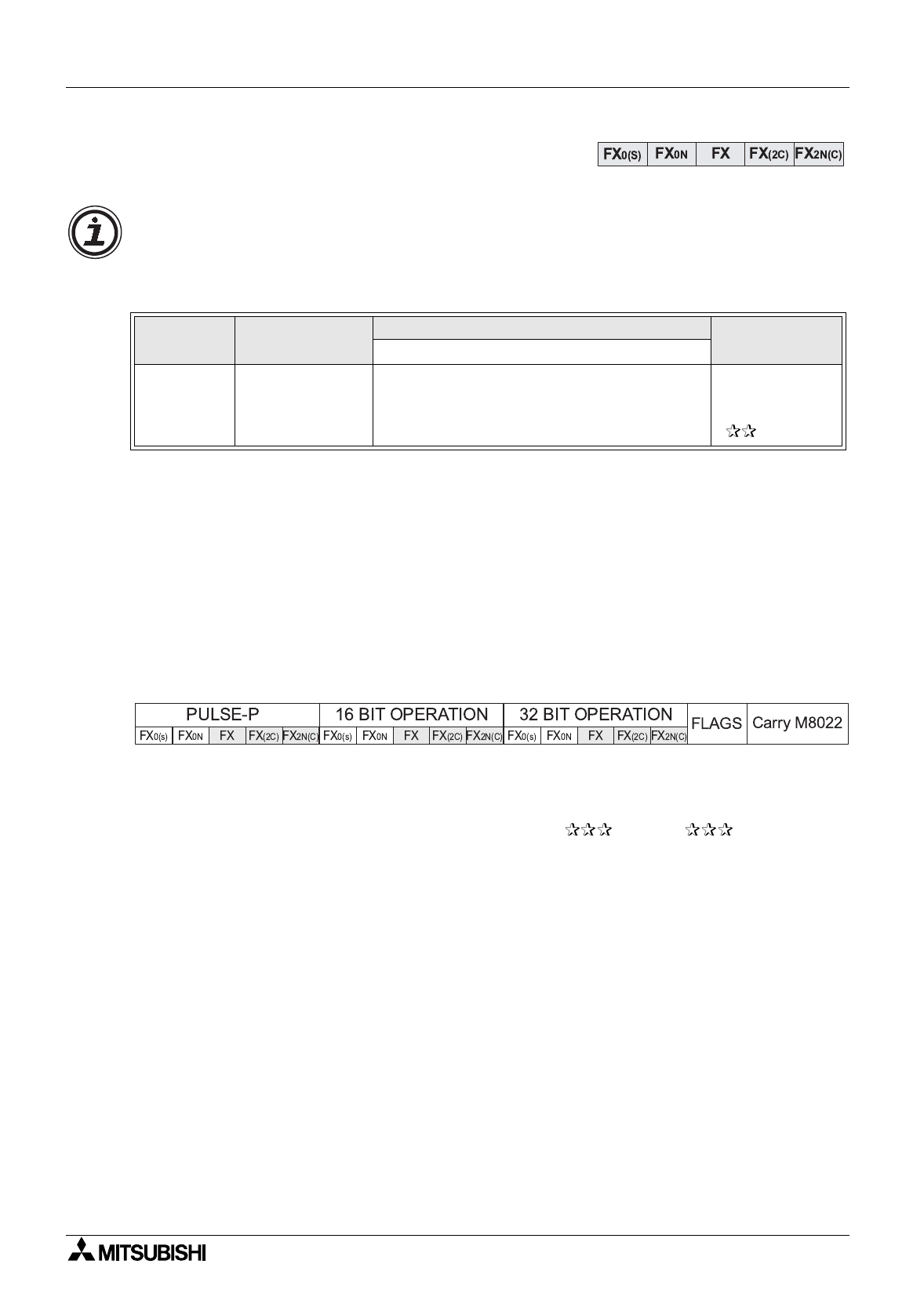
Applied Instructions 5
5-1
5. Applied Instructions
The table will be found at the be
g
innin
g
of each new instruction description. The area identified
as ‘Operands’ will list the various devices (operands) that can be used with the instruction.
Various identification letters will be used to associate each operand with its function, i.e. D-
destination, S- source, n, m- number of elements. Additional numeric suffixes will be attached
if there are more than one operand with the same function.
Not all instructions and conditions appl
y
to all PLC’s. Applicable CPU’s are identified b
y
the
boxes in the top ri
g
ht hand corner of the pa
g
e. For more detailed instruction variations a
second indicator box is used to identif
y
the availabilit
y
of pulse, sin
g
le (16 bit) word and double
(32 bit) word format and to show an
y
fla
g
s that are set b
y
the instruction.
No modification of the instruction mnemonic is required for 16 bit operation. However, pulse
operation requires a ‘P’ to be added directl
y
after the mnemonic while 32 bit operation requires
a ‘D’ to be added before the mnemonic. This means that if an instruction was bein
g
used with
both pulse and 32 bit operation it would look like..... D P where
was the basic
mnemonic.
The ‘pulse’ function allows the associated instruction to be activated on the risin
g
ed
g
e of the
control input. The instruction is driven ON for the duration of one pro
g
ram scan.
Thereafter, while the control input remains ON, the associated instruction is not active.
To re-execute the instruction the control input must be turned from OFF to ON a
g
ain.
The FLAGS section identifies an
y
fla
g
s that are used b
y
the instruction. Details about the
function of the fla
g
are explained in the instructions text.
Mnemonic Function
Operands
Program steps
D
CJ
FNC 00
(Conditional
Jump)
A method of
j
umpin
g
to an
identified pointer
position
Valid pointers from the ran
g
e 0 to 63 CJ,CJP:3steps
Jump pointer
P
:1 step
Applied Instructions are the ‘specialist’ instructions of the FX famil
y
of PLC’s. The
y
allow the
user to perform complex data manipulations, mathematical operations while still bein
g
ver
y
eas
y
to pro
g
ram and monitor. Each applied instruction has unique mnemonics and special
function numbers. Each applied instruction will be expressed usin
g
a table similar to that
shown below:
FX Series Programmable Controllers


















